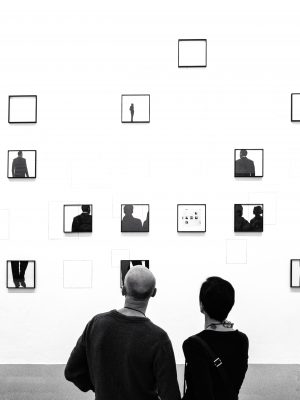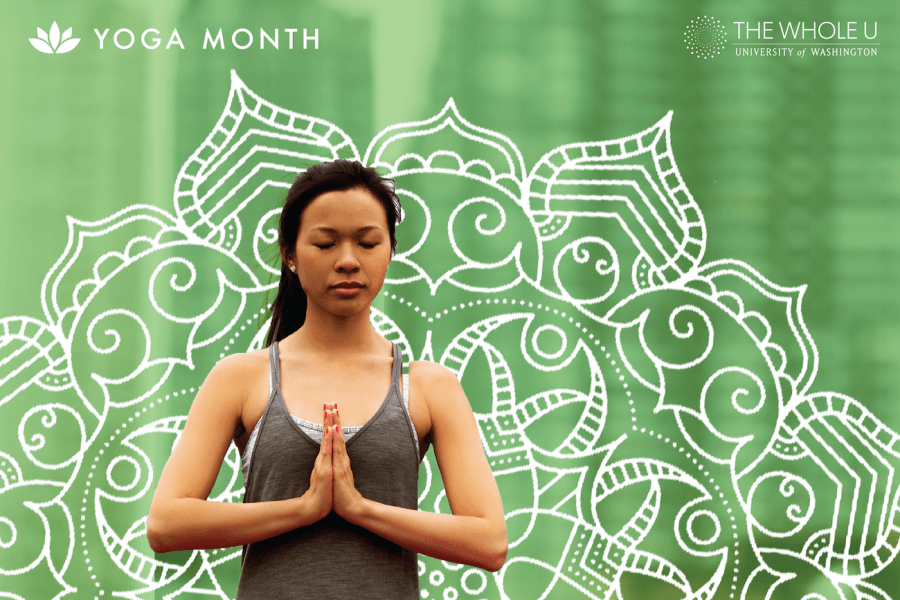
Yoga Month Week 4: Art Appreciation
With UW Yoga Month 2019 coming to an end, The Whole U strives to bring art to life with a greater appreciation for the creative and open-ended spirit of yoga during Week 4. This year’s Yoga Month connects inspirations and art appreciation to achieve a better understanding of yoga and its benefits. Read more into the benefits behind practicing yoga with the forms of art in mind and for some further insights from The Whole U’s formal Student Designer, Yuansi Li.
Remember to check out Week 1, 2, or 3 Yoga Month Inspiration article if you did not have chance to yet. To learn more about this month’s yoga activities, register to join UW Yoga Month 2019!
Yuansi Li’s Take on Art Appreciation

Father, Luo Zhongli, 1980
This was the very first painting I’ve ever seen in an art museum. I remember it was a cold winter day in Beijing, my mom took the ten-year-old me to the National Art Museum of China. We stood in front of this giant painting — almost two times as tall as me — and fell into silence. After a while, I broke the silence with excitement: “This is the biggest photograph I’ve ever seen!”
Ten years later, I stood in front of this painting again. This time, I was able to see a lot of things I was not able to see as an ignorant little girl. This is a Chinese peasant who has worked in the golden wheat fields shown in the background for decades. The sun strikes directly at his face, creating harsh highlights on his forehead, eyebrows, nose, cheekbones, and lower lip. The stark contrast of dark and light drew my attention to his wrinkles that seem to be carved into his face. He is holding a bowl of water that is murkier than the drops of sweat on his face. He is between actions. It seems like he was about to drink water but caught sight of me, the viewer. And that makes me feel a little bit uncomfortable because I felt like I was being intrusive. He wrapped his finger with some fabric. Did he injure himself while working? The painting is not as twice as tall as me anymore but the overwhelming size still makes it seem odd for a portrait of a peasant: usually a larger painting size is a eulogy to political leaders or mythology heroes. In this painting, I see sincere respect for a hardworking peasant.
It is a eulogy to an everyday hero.
What is different between the 20-year-old me and the 10-year-old me is that I am now able to observe more closely at the details, interpret visual elements, relate to context and intention, evoke emotions, feel for the subject, and think beyond the painting. What is great about it is that I did not learn these forms of appreciation from art history classes. I learned them from observing the world, going to places, hanging out with friends, eating with my parents, watching movies, and from my everyday life.
What’s even more amazing is that the ability to appreciate art, not only applies to one painting I showed above, but it also applies to all sorts of art forms: sculpture, film, photography, dance, architecture, design, and even food.
Why Appreciating Art
Art helps you feel emotions
In our everyday life, we try to control our emotions so that they don’t get in the way of our efficiency and professionalism. However, the more we do it, the fewer emotions we feel. Appreciating art is a good way to let out your emotions because colors, shapes, compositions, lighting, and content all evoke emotions.

Oude Kurk of Amsterdam, 2018. Photo by Yuansi Li.
What do you feel when you see a Protestant church bathed in an ocean of massive red? Scared? Intimate? Overwhelmed? Bewildered? Curious? I felt all of the above when I visited Oude Kurk of Amsterdam last summer. The Italian artist Giorgio Andreotta Calò turned it into a red darkroom by covering windows with red film paper. The shades of red changed with the sunlight. Upon entering the church, I couldn’t move my feet because a sense of power and seriousness got hold of me. It was so intense that I even held my breath. It was almost as if I was entering another reality. As I slowly walked around, I started to feel like something was disappearing as the light was shifting subtly.
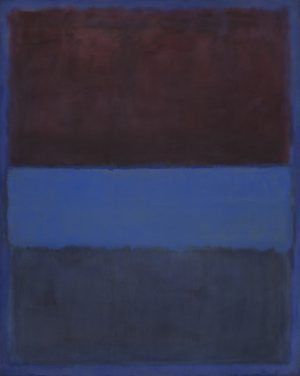
Mark Rothko №61 (Rust and Blue)
In many cultures, crying and feeling sad is regarded as weak. Tearing in public might seem embarrassing to many. I almost never cry in public. The only exceptions are at art museums. I went to the Museum of Contemporary Art in Los Angeles two years ago. I stood in front of this huge painting of Mark Rothko for 15 minutes. I felt like the grief and sorrows were flowing from the canvas to me through the color fields and the air conditioning in the gallery. I cried. I didn’t know why I felt so sad but being able to show my vulnerability to a painting made me feel secure and more comfortable.
Art encourages you to unleash your imagination
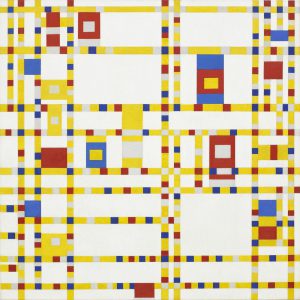
Broadway Boogie Woogie, Piet Mondrian. MOMA.
“It looks like a map.”
“Is it a painting about traffic?”
“Hmm, is it a circuit board?”
These are the answers I got when I asked my friend to tell me what they saw from my favorite painting Broadway Boogie Woogie by Piet Mondrian. When I stood in front of this painting at MOMA in New York, the “Rhapsody in Blue” started playing in my mind. As my eyes moved with the grid, I felt like I was walking on the busy streets in New York City, hearing cars honking and watching the terrible traffic during rush hours. Suddenly, the city became alive and moved with the rhythm of the music. I almost wanted to dance and to become one of the color blocks on the canvas.
Art facilitates internal conversations with oneself
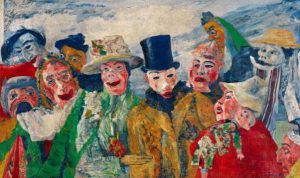
Intrigue, James Ensor.
Spooky. That was my first reaction when I saw James Ensor’s master piece “Intrigue” at Rijksmuseum in Amsterdam. These creatures—I wasn’t even sure if they were human beings—were especially spooky because they looked as if they were alive: redness in the face, dynamic psychology between each other, and distinctive facial expressions. What intrigued me about this painting and what made me think a lot about my life were the masks that these creatures wear in the painting. Usually, when people put on masks, they idealize themselves with a personality or reality that’s different and oftentimes is better than who they really are. However, in this painting, these masks made me feel like they are true to the characters: the snobby bourgeoisie couple in the center, a worried lady carrying a sick child, a skeleton looking curious, and a mask looking angry. I was confused. What’s the point of wearing a mask if a mask doesn’t change anything about you? Maybe that is the point. Because a mask will not change who you are. It only gives you a temporary veil.
Art Inspires You
Everyone can be inspired by art. It doesn’t have to be going to an art museum, stopping at a Renaissance painting and having an AHA moment. It can be an illustration you come across in a book you are reading that makes you want to pick up a pen and draw or a colorful dress in your closet that makes you want to be more bubbly that day.
How Should We Appreciate Art?
A lot of people find appreciating art intimidating because they think it takes a lot of professional training and practice in art history. Granted, studying art history will give you a formal way to analyze and understand artworks. However, appreciating art should be as easy and intuitive as breathing. It’s our nature. Look at a piece of artwork, you will know if you like it or not. Give yourself some time, you will know how it makes you feel. Immerse yourself in the artwork itself, you will start to create your own interpretation. Just go out there and spend time with art. Art will also appreciate you.
From art to nature, share what inspires you with us here!
To learn more about this month’s yoga activities, register to join UW Yoga Month 2019! A very special thanks to our sponsors BECU, US Bank, and AT&T as well as to UW Recreation.
